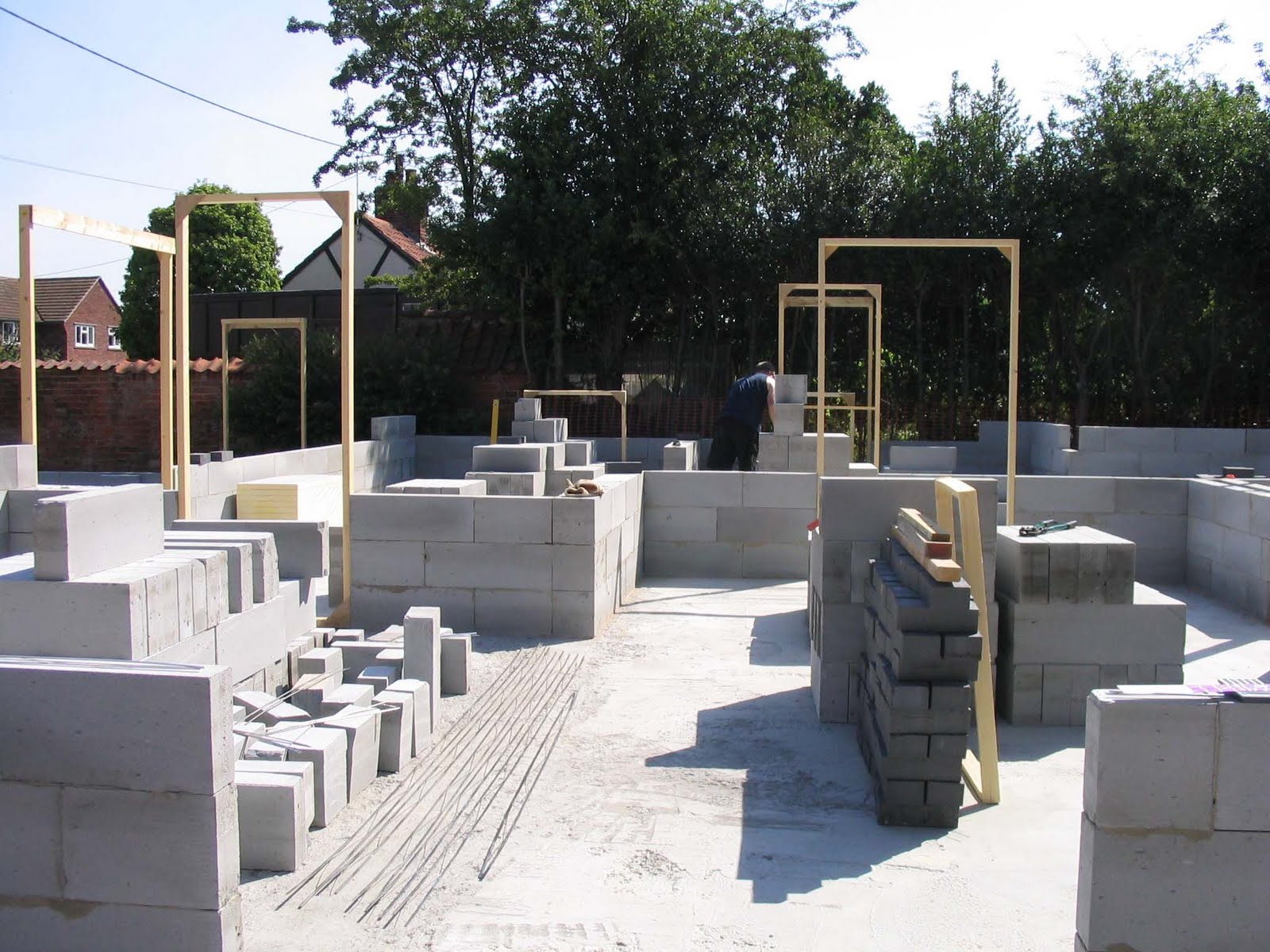Blockwork Real Name - What You Call It
Have you ever stopped to think about the stuff that holds up so many of the buildings we see every day? This foundational material, often just called "blockwork," plays a really big part in making our homes and other places stand strong. It's the quiet backbone of countless structures, giving them the lasting support they need. You know, it's pretty much everywhere once you start looking for it.
When we talk about this material, we're really talking about a method of putting things together, a way of building walls and other parts of a structure using individual units. These units, which can be made from different things, fit together to form something much bigger and more solid. It's a simple idea, yet it provides a lot of stability for what gets built.
So, what exactly goes into this kind of building, and why is it so widely used around the globe? We'll take a closer look at what makes it so common, the different kinds of pieces you might find, and why it's such a trusted choice for putting up places where people live and work. It's actually a pretty interesting topic when you get down to it.
Table of Contents
- What's the Real Deal with Blockwork?
- The Core Idea of Blockwork Real Name
- How Does Blockwork Get Its Strength?
- Different Kinds of Blockwork Real Name Pieces
- Where Do We See Blockwork Most Often?
- Blockwork Real Name and Keeping Things Comfortable
- What Makes Blockwork a Good Choice for Buildings?
- Thinking About Your Blockwork Real Name Project?
What's the Real Deal with Blockwork?
When folks talk about "blockwork," they're referring to a way of putting up buildings where you use individual blocks to form walls and other parts of a structure. It's a pretty straightforward idea, honestly, but it’s a cornerstone for so many places we inhabit. The way these blocks connect, one after another, creates a really firm base. This base helps make sure a building stands tall for a long, long time and stays steady through all sorts of conditions. It's a system that, in a way, just makes sense for building things that need to last.
This method of building, which is about putting blocks together, is a basic part of how many structures come to be. It’s not just about stacking; it’s about making sure each piece fits with the next to create a unified whole. You know, it's the kind of work that happens before a building really starts to take its final shape. Getting this part right is, in some respects, the most important bit for any building project. It sets the stage for everything else that comes after.
The Core Idea of Blockwork Real Name
The "blockwork real name" concept is really about how this building method creates walls and structures using those individual units we mentioned. It's a foundational skill, something people have done for ages, just with different materials over time. These units, whether they are made of concrete or clay, get laid in rows, often with mortar in between to hold them fast. The idea is to create a pattern where the blocks overlap, kind of like how you might stack bricks, but often with much larger pieces. This overlapping helps distribute weight evenly and prevents weak spots. It's a simple approach that provides a lot of lasting power for a building, you know, keeping it together.
- Dbl Twitter
- Special Kherson Cat Twitter
- Court Logan Porn Twitter
- Adam Archuleta Porn Twitter
- Myers Punannieannie Bbyanni
This way of building is very common around the globe. You’ll find it in houses, big commercial buildings, and even things like fences or garden features. The beauty of it is that it’s quite adaptable. You can use different sizes and types of blocks depending on what you’re trying to build and what kind of finish you want. So, in a way, the "blockwork real name" describes a broad family of building practices, all centered around using these pre-formed units to create something solid and lasting. It’s a pretty reliable method, as a matter of fact, for creating strong places.
How Does Blockwork Get Its Strength?
The strength of blockwork comes from a few key things working together. First, the individual blocks themselves are made from tough stuff, like concrete or fired clay, which can handle a lot of pressure. Then, there's the way they fit together. When you put one block on top of another, and then the next row overlaps the gaps in the one below, it creates a kind of woven pattern. This interlocking action means that any force put on the wall gets spread out over many blocks, not just one. It’s like a team effort, you know, where every piece supports the others.
Also, the material used to stick the blocks together, usually mortar, plays a big role. Mortar fills the spaces between the blocks and hardens, essentially gluing them into one big, solid piece. This connection is what helps the wall act as a single unit, rather than just a pile of loose blocks. This combination of strong individual pieces, a clever overlapping pattern, and strong binding material is what gives blockwork its impressive ability to stand up to the elements and support heavy loads. It’s actually quite ingenious, if you think about it.
Different Kinds of Blockwork Real Name Pieces
When you consider "blockwork real name" and the actual pieces involved, you'll find a good deal of variety out there. Concrete blocks are, without a doubt, a super common sight on building sites everywhere. They come in many shapes and dimensions, some solid, some with hollow spaces inside. These hollow ones are pretty handy because you can run pipes or wires through them, or even fill them with insulation or steel rods for extra sturdiness. It’s a pretty clever design, allowing for a lot of different uses.
Beyond concrete, you also have blocks made from clay, which might remind you more of traditional bricks, but they are generally bigger. These can give a different look and feel to a building. The choice of material for your "blockwork real name" project depends on things like the weather where you are, how much insulation you need, and what you want the finished wall to look like. Each type of block has its own qualities that make it a good fit for certain situations. There's quite a range, you know, to pick from.
Where Do We See Blockwork Most Often?
You might be surprised at just how many places blockwork shows up. It’s a very common sight in the making of houses and apartment buildings, forming the outer walls and even some of the inner ones. But its uses don't stop there. Think about garden walls, the sides of garages, or even those sturdy retaining walls that hold back earth on a slope; those are often made with blockwork. It’s a method that provides a solid framework for a whole lot of different structures, big and small. You know, it’s really versatile.
This building technique is used all over the world, which tells you a lot about how effective it is. It's not just for big, imposing structures either. Sometimes, it forms the inner layer of a wall, with another material, like brick or siding, on the outside. This way, you get the strength of the blocks on the inside and a different look on the outside. So, when you think about where blockwork appears, it’s honestly almost everywhere construction is happening. It’s a pretty fundamental way of building.
Blockwork Real Name and Keeping Things Comfortable
One neat thing about using blocks, especially concrete ones, for your "blockwork real name" project is how they can help with the temperature inside a building. Walls made of these materials have a certain ability to resist heat moving through them. This means that in hot weather, they can help keep the heat out, and in cold weather, they can help keep the warmth in. This quality can lead to less need for heating and cooling systems to work so hard, which in turn can mean lower energy bills. It’s a pretty practical benefit, actually.
When blocks are used as part of a wall system, especially in what's called a cavity wall (where there's a gap between an inner and outer layer), they can be really good at managing temperature. This helps make the inside of a building feel more consistent and pleasant, no matter what the weather is doing outside. So, the "blockwork real name" isn't just about making something strong; it’s also about helping create a living or working space that feels good to be in and is kind to your wallet over time. That's a definite plus, you know, for any home or business.
What Makes Blockwork a Good Choice for Buildings?
There are a few solid reasons why blockwork remains a popular choice for building. For one, it’s known for its staying power. Structures built with blocks can stand up to a lot of wear and tear, including harsh weather and the simple passage of time. They don't rot or get eaten by pests, which is a big deal for long-term construction. This means less upkeep and a building that holds its shape for many, many years. It’s a pretty reliable option, in a way, for creating something lasting.
Another point is the way it helps with sound. Block walls can be pretty good at blocking out noise from outside, making the inside of a building quieter and more peaceful. This is a nice bonus, especially in busy areas. Plus, because the blocks are uniform in size, building with them can be quite orderly and straightforward, which helps keep construction projects moving along. So, when you consider all these things, it’s clear why blockwork continues to be a go-to method for builders. It just makes a lot of sense.
Thinking About Your Blockwork Real Name Project?
If you're considering a project that involves "blockwork real name," whether it's putting up a new wall, building a fence, or creating a retaining wall, it's good to know that there are services out there that specialize in this kind of construction. These teams have the know-how to make sure the job gets done right, from laying the first block to making sure everything is level and plumb. They understand the different types of blocks and the best ways to use them for various purposes. It’s about getting that sturdy finish you’re looking for, you know, for your space.
Working with experienced people for your "blockwork real name" needs means you can count on a structure that is built to stand. They will follow a clear plan, making sure all the steps are taken in the right order and that safety is a top priority. This systematic approach means the work is done effectively and efficiently, giving you peace of mind. So, if you're thinking about adding something solid and lasting to your property, blockwork is definitely a method worth considering, and there are good folks who can help make it happen for you. It's a pretty smart choice, to be honest.
- Hbomberguy Twitter
- Buffpup Face Reveal
- Bearcat Journal Twitter
- Scru Face Jean Twitter
- Missamberfields Onlyfans

Unveiling The True Identity What Is The Rocks Real Name - ACCDIS

Sophieraiin Real Name: Unveiling The Identity Behind The Online Persona

The Real Self Build Blog: Early Blockwork